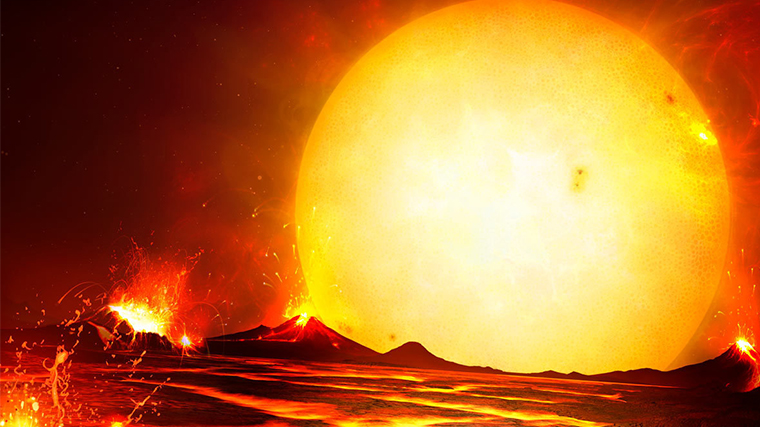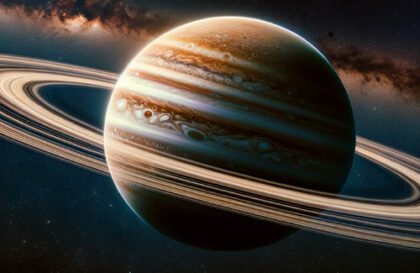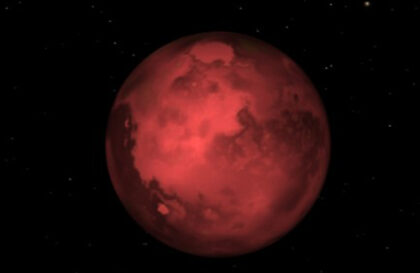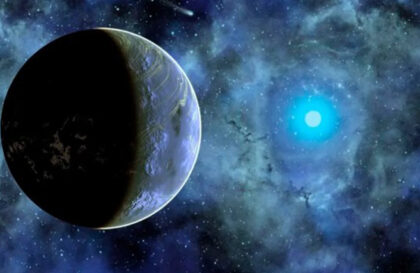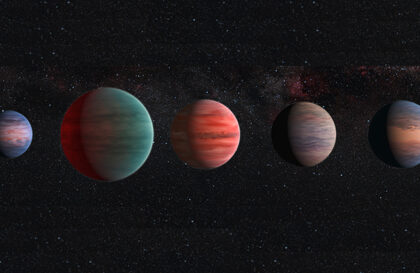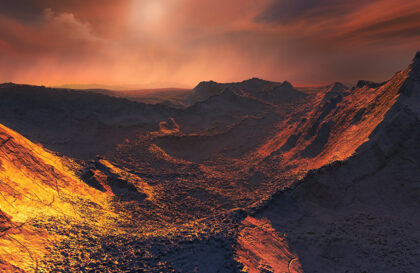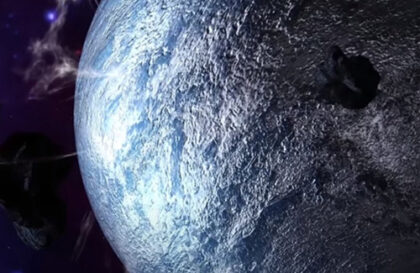An exoplanet whose surface is liquid lava can be called lava-ocean planets. They have a special nature associated with their proximity to their parent stars. Famous examples of such planets are CoRoT-7 b, Kepler-10 b, Alpha Centauri B b, and Kepler-78 b. Adherence to the “lava-ocean planets” category is based on the fact that these exoplanets, due to their relatively small mass, compact size, and extremely close orbits, are under the influence of intense tidal forces provided by their parent stars.
The intense gravitational deformation caused by the tidal effects of the star leads to internal friction in the crust and mantle of the planet. As a result, there is significant internal heat capable of melting rocks into the state of magma. This molten substance rises to the surface due to volcanic activity. Analogous geological processes are also observed within the Solar System, especially on Jupiter’s satellite Io.
The influence of intense stellar radiation also affects the surface of lava exoplanets. Radiation energy can melt the surface layers of the crust, creating a peculiar ocean of molten lava on the illuminated side of the planet. Meanwhile, the side facing away from the star can remain cold and even be covered with ice if the planet has a sufficiently low average temperature. At higher average temperatures, lava lakes can form on the dark side. An interesting point is the possibility of the formation of stone rain on planets of this type, caused by the condensation of minerals in the atmosphere and their subsequent deposition on the surface.
CoRoT-7 b
An example of a lava exoplanet is CoRoT-7 b. This planet orbits the star CoRoT-7 in the constellation of the Unicorn. It was discovered by the COROT spacecraft in early 2009. Its relatively small radius is 1.58 ± 0.1 Earth radii, and its mass is 7.42 ± 1.21 Earth masses. It is noteworthy that it is located in an extremely close orbit (0.017 AU) and completes a revolution around its star in 20 hours, which makes it one of the shortest years in the galaxy.
On the surface of CoRoT-7 b, illuminated by the light of its star, stretches a vast lava ocean, formed at extreme temperatures of about +2500-2600 °C – higher than the melting point of most minerals. The dominant component of the atmosphere of this planet is evaporated rock, which settles on both sides of the planet in the form of rock showers. CoRoT-7 b is probably tidally blocked by its star, like Earth’s moon.
Alpha Centauri B b
Due to its very close location to the star, the planet Alpha Centauri B b (0.04 AU (6 million km)) does not fall into the habitable zone. It was assumed that the planet revolved around the parent star in 3,236 Earth days, always facing it from one side.
The surface temperature of the planet was estimated at approximately 1200 °C (1473 K), which is higher than the melting temperature of most types of silicate magma. For comparison, the average temperature on the surface of Venus, the hottest planet in the Solar System, is 462 °C (735 K).
But there was no planet. In 2015, scientists concluded that fluctuations in the star’s radial velocity (one of the ways to search for planets) every 3.236 days are associated with the peculiarities of data processing.
Kepler-10 b
This is one of the exoplanets discovered by the Kepler telescope, and as of January 2011, it was the smallest exoplanet. Its radius is only 1.4 times larger than the Earth’s. A year on it lasts 0.84 Earth days and it is 20 times closer to the star than Mercury is to the Sun.
The planet has a high surface temperature — about 1800 K (~1527°C) on the day side and is the first discovered iron planet. Its density is 8.8 g/cm³ (the density of iron is 7.874 g/cm³). The very high temperature of the surface leads to the fact that the iron on the planet will be in a liquid state.
The acceleration of free fall on the planet is more than twice that of Earth (≈22 m/s²), and upon hypothetical landing on this planet, the observer would experience a strong overload. But no one will want to fall on red-hot liquid lava.
Kepler-78 b
Kepler-78 b is extremely close to its star – the distance to the star is only 1.5 million kilometers (0.01 AU), and the duration of the revolution around the parent star is only 8.5 hours. The Earth is 100 times farther from the Sun. The entire illuminated side of the planet is heated, according to various estimates, in the range of 2100-2800 °C. The entire surface of the planet is covered by a huge ocean of lava, which makes it a lava planet.
It is still clear how Kepler-78 b ended up so close to its star: the distance to its parent star is less than 1.5 diameters from the star itself. She could not form so close to her star. Scientists do not yet know the mechanism by which it was able to get so close to its star.
Due to its very narrow orbit, Kepler-78 b will fall into its star after 3 billion years and cease to exist.
Image credit:
https://www.planetary.org
https://www.spaceexploration92.com
https://www.planetary.org/space-images
https://exoplanets.nasa.gov
